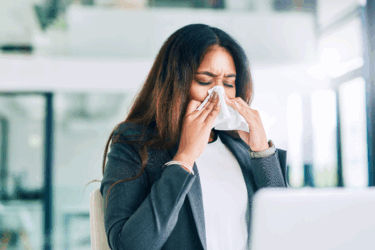Many infants and babies are pre-disposed to baby eczema because their skin barrier is so fragile, but treating baby eczema is tricky. It’s hard to see your little one rubbing his cheeks back and forth on surfaces for relief, plus, that only makes it worse. The dry, flaky, red skin of eczema can confound you over and over again, but pediatricians from the Division of Allergy and Immunology at Cincinnati Children’s Hospital have answers to your questions.
Treating Baby Eczema: What to Use
In infants, eczema affects the face, scalp, arms and legs, but why? Children with this form of sensitive skin may have allergies to any number of things. While doctors say there is no known cure, it can be controlled with good skin care.
While doctors recommend creams over lotions to help soothe Baby’s skin, all babies are different and a little trial and error may be in order. Thicker cream creates a better barrier on your baby’s skin, decreasing skin breakdown. Cincinnati Children’s recommends the following creams to start with:
- Petroleum jelly
- Aquaphor ointment
- A-Mantle cream
- CeraVe cream
- Cetaphil cream
- Eucerin cream
- Vanicream
Other products are suggested by The National Eczema Foundation at nationaleczema.org.
Is Bathing OK?
Here’s a routine that’s recommended for your baby with eczema:
Bathe Baby in warm water — not hot — for 10 to 15 minutes at a time, then immediately pat him dry and within three minutes, apply a thick, moisturizing cream from neck to toes and carefully on any facial areas.
- Know that areas that are skin-toned (but dry and flaky) need a moisturizing cream applied minimally twice a day, but often more frequently.
- Pink or red areas mean inflammation and cream alone may not calm that down — those areas may require a steroid cream. Start with an over-the-counter 1-percent hydrocortisone cream applied thinly two times a day for up to a week. The cream should be used at least
one hour apart from a moisturizing cream for best effectiveness and should not be put in a diaper area or near eyes without discussing with your pediatrician first. - If honey-crusted scabbing is seen over broken skin, seek the advice of your pediatrician since this can be an indication of bacterial growth.
Since eczema is a tough problem, seeing the pediatrician early on may be best.
What if It’s Not Eczema?
Getting your baby’s condition diagnosed properly is important as it may or may not be eczema but an infection instead. At home, if Baby’s eczema treatments fail to work, it may be an infection requiring medicine. The medicine prescribed depends on the type of germ causing the infection — another riddle. A topical antibiotic is needed. If it’s a virus, the infection will require an anti-viral medicine like acyclovir. If it’s fungal infection, your doctor will first prescribe an anti-fungal cream. Signs of infection include:
- Flu-like symptoms of a fever (the thermometer reads 100.4 or higher). Seek your doctor’s care.
- Signs of infection without fever: If the creams and hydrocortisone don’t work, get a pediatric dermatologist referral from your pediatrician.
It’s helpful to know that many babies will outgrow eczema, but for some it may continue into adolescence or adulthood. Since it affects up to 20 percent of infants, trying remedies at home is a start. However, if everything you try doesn’t work, it’s on to your pediatrician.





